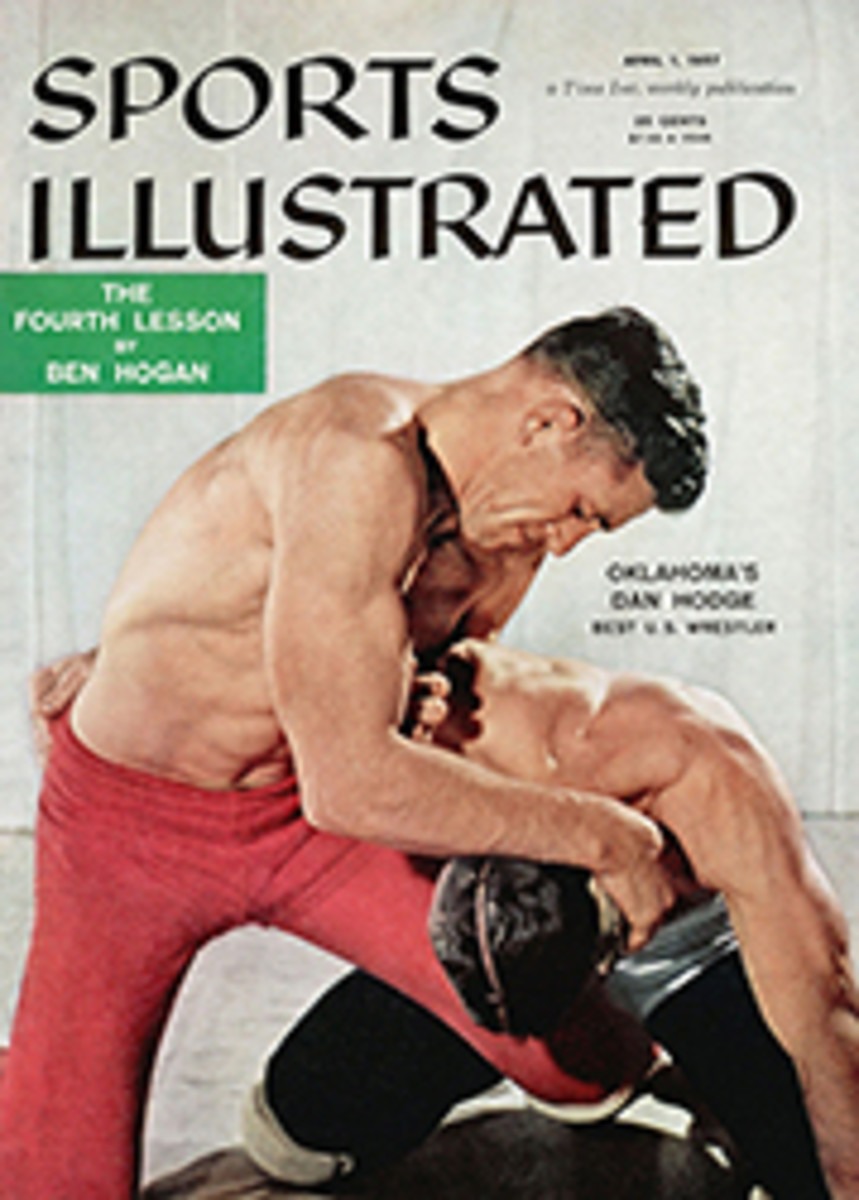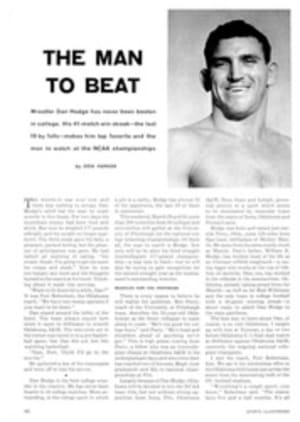
MASTERS IN FLUX
It is now a little over a quarter of a century since Bob Jones started work on the Augusta National golf course, the dream course he had looked forward to building throughout his tournament career and which he designed (in collaboration with Alister MacKenzie, the gifted Scottish architect) in 1931, the year after his Grand Slam and his subsequent decision to retire from competitive golf. Considered since its birth to be the country's finest and handsomest meadowland layout, the Augusta National has been unique among golf courses in one very interesting respect: whereas the average course, once it is officially completed, remains static in design—give or take the covering up of a bunker here or moving a tee back there to suit the whims and the golfing "skill" of the incumbent genius at the head of the green committee—the holes at the Augusta National have undergone continual and considerable revision.
The first changes that were made back in the 1930s were prompted mainly by Jones's belief that it is impossible to build a golf course wholly on paper and that you must observe how the individual holes actually play and then modify certain features of certain holes to enhance their character and bring out their full shot values. In more recent times, the principal changes have constituted a reasonable, realistic effort to keep the course a fair but demanding test of championship golf for the great players who next week will once again compete in the game's spring classic, the Masters tournament. This has meant, among other things, increasing the yardage of a number of the holes, for some that were long enough and strong enough when they were originally laid out were in danger of becoming obsolescent as continuing advances in equipment and technique made the average tournament pro a much longer hitter.
There is no set rhythm or scale to the annual changes that Bob Jones directs at the Augusta National. Some years only minor changes are made, such as recontouring a portion of a green (in order to strengthen the implicit strategy of the entire hole). Other years, the changes have been more extensive—a green is radically reconstructed, a brand new tee is built at a different angle to the fairway or a creek is redirected and widened into a pond (to reinforce the strategic concept of that particular hole). And occasionally, the Augusta National, the first course to make conscious provision for the spectator in its architecture, trots out the bulldozers and builds up the mounds behind greens and other vantage points that have been introduced at choice junctions on the course specifically for the accommodation of the galleries. One mounded area (behind the 2nd green) offers a view of action on four holes and can handle over 2,000 spectators.
As a result of this informal program, one of the standard side pleasures for the golf enthusiasts who make a regular spring pilgrimage to the Masters is to note and discuss the revisions effected since their previous visit. This year the old Augusta hands will remark changes on three holes, the 8th, 13th and 15th—interestingly enough, all of them par-5 holes. As the drawings on these pages demonstrate, only one of these alterations is of a spectacular nature. Because its position close by the ninth tee and fairway had caused traffic congestion and a resulting bottleneck, the old punch-bowl 8th green has been razed and a new (temporary) green erected out to the left. The changes on the 13th and 15th, though less arresting, will strengthen both of these holes immeasurably by requiring the man who would get home in two to play two really superb shots.
On the 470-yard 13th, for example, where the elbow of the fairway banks upwards from left to right, somewhat like the corner of an indoor track, a golfer could formerly play well away from the trouble along the left side of the fairway—usually his drive would kick nicely off the high right side of the fairway and bounce around the corner. From the new tee he must play a slightly more skillful tee shot to reach this ideal position. On the 15th, 505 yards long, many golfers used to play their long second shots over the pond to the safe, or right, side of the green area. The new trap at the right of the green (which Ben Hogan suggested) will make fancy scrambling harder and reward the golfer who plays a superior second.
MAP
JOHN LANGLEY HOWARD
A PUNCH-BOWL TYPE of green, the old eighth was eminently satisfactory from all golfing points of view. On the last round of the Masters, the pin was usually placed well to the back, behind the steep contour. Great delicacy was required of approach and putt.
OLD 8TH GREEN
MAP
JOHN LANGLEY HOWARD
SLIGHTLY PLATEAUED, the new eighth falls off on all sides. By itself the new green is not as demanding as the old one, but reaching it in two now requires two long and perfectly placed woods, each of them fairly close to the trees bordering the fairway.
NEW 8TH GREEN
MAP
JOHN LANGLEY HOWARD
CROWD CONTROL was one of the major problems on this 520-yard par-5 hole. A big gallery following a match to the green frequently impeded players hitting off the adjacent 9th tee. A serious bottleneck resulted that only resituating the old green could correct.
OLD 8TH
MAP
JOHN LANGLEY HOWARD
MORE ROOM for the gallery but very little for the well-played second shot is provided by the new 8th green, tucked in a corner behind trees. Since the ideal line off the tee is now to the right, the old mid-fairway trap has been moved over to the right.
NEW 8TH
MAP
JOHN LANGLEY HOWARD
SUBTLE CHANGE on 13th consisted of moving the tee three yards back and five yards to the left. The new tee will accentuate the dog-leg bend of the hole and require a better-placed tee shot if the player intends to gamble on carrying the creek and protecting the green on his second shot. Jones considers the 13th and 10th the two finest holes on the Augusta course.
OLD 13TH
MAP
JOHN LANGLEY HOWARD
[See caption above.]
NEW 13TH
MAP
JOHN LANGLEY HOWARD
GALLERY PROTECTION was one of the reasons for creating a new green-side bunker on the 15th, a 505-yard par 5 where Gene Sarazen scored his famous double eagle. Recently, due to their preoccupation with avoiding the risky left side of the green, the tendency of the tournament competitors has been to play their long second to the safer right side—and, very frequently, dangerously close to the spectators gathered along the right side.
OLD 15TH
MAP
JOHN LANGLEY HOWARD
[See caption above.]
NEW 15TH

